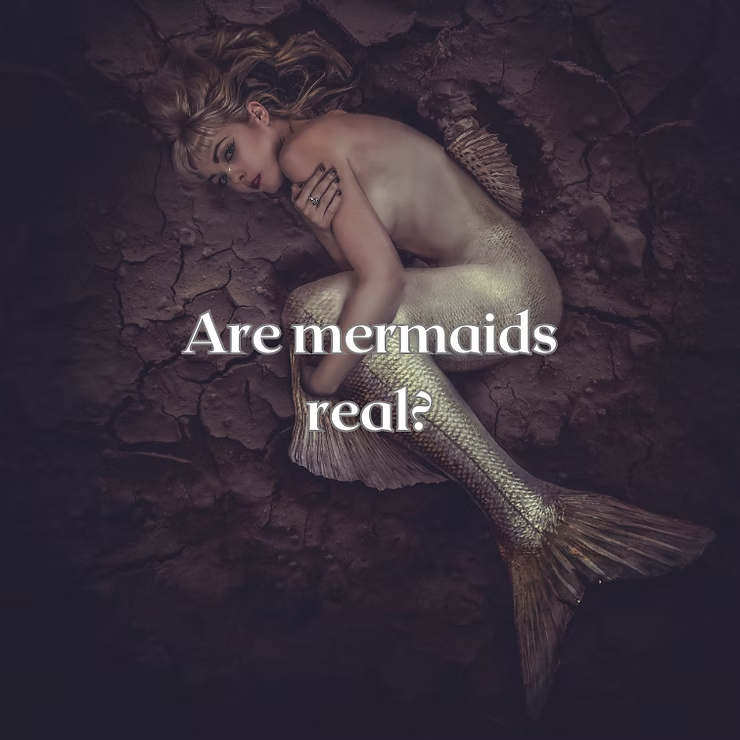The Enduring Allure of Mermaids
Mermaids, half-human and half-fish creatures, have fascinated people for centuries. From ancient myths to modern subcultures, they continue to spark imagination, inspire art, and fuel debate over their existence.
Key Takeaways
- The mermaid myth originates from ancient cultures around the world.
- Legends like the Little Mermaid and Greek Sirens shaped global folklore.
- Mermaids are popular in films, books, music, and fashion.
- Many sightings are explained by misidentified creatures like manatees or dugongs.
- Psychological factors such as pareidolia influence mermaid sightings.
The Myth of Mermaids
Origins of the Mermaid Myth
Stories of mermaids can be traced to ancient Babylonians and Greeks, where legends of half-human, half-fish beings symbolized the ocean’s mystery. Sailors may have mistaken manatees or dugongs for mermaids, while others believe the myth reflects humanity’s awe of the sea’s beauty and power.
Famous Mermaid Legends
Among the best-known legends is Hans Christian Andersen’s The Little Mermaid, later adapted into films and musicals. Greek mythology also introduced the Sirens, dangerous beings who lured sailors with their enchanting songs. These tales, though fictional, continue to enchant audiences worldwide.
Mermaids in Popular Culture
Mermaids appear in countless forms of modern entertainment, from movies like The Little Mermaid and Splash to songs by global artists. Beyond media, mermaid-inspired fashion, accessories, and décor allow fans to embrace the fantasy in daily life. Their iconic image reflects beauty, freedom, and mystery.
Scientific Explanations
Aquatic Creatures Mistaken for Mermaids
Manatees, dugongs, and even seals have been mistaken for mermaids, especially in poor visibility at sea. Their human-like shapes and movements contributed to centuries of misidentifications.
Psychological Explanations
Pareidolia—our brain’s tendency to see familiar patterns—helps explain many reported sightings. Folklore and cultural priming also make people more likely to interpret ambiguous shapes in the water as mermaids.
Mermaids in Art and Literature
Depictions in Ancient Art
Ancient pottery, sculptures, and paintings depict mermaids as alluring, mysterious beings. The Greek Siren Vase and Babylonian figures highlight their cultural significance, linking them to fertility and the sea.
Mermaids in Fairy Tales and Folklore
Mermaids often appear as enchanting yet dangerous figures. Some legends show them as benevolent helpers, while others portray them as omens of disaster. Their dual nature reflects humanity’s complex relationship with the ocean.
Mermaid Sightings and Hoaxes
Famous Sightings
Christopher Columbus reported seeing mermaids in 1493, later identified as manatees. In 2009, reports in Israel sparked global attention but lacked evidence. Such cases highlight both fascination and skepticism.
Debunking Hoaxes
Many supposed mermaid discoveries were deliberate fabrications or misidentified animals. Critical thinking and scientific evidence help separate myth from reality, keeping the allure alive while grounding beliefs.
The Mermaid Community
Subculture and Lifestyle
A modern mermaid subculture thrives today, with enthusiasts crafting tails, attending conventions, and performing underwater shows. Many also champion marine conservation, linking fantasy with real-world advocacy.
Mermaid Performers and Events
- Underwater performers showcase synchronized swimming in elaborate tails.
- Mermaid classes teach enthusiasts how to swim like mythical beings.
- Community gatherings foster creativity and environmental awareness.
Conclusion
Though mermaids remain mythical, their presence in folklore, art, and culture proves their lasting influence. Scientific explanations offer clarity, but the fascination they inspire continues. The growing mermaid community ensures this enchanting legend thrives in modern times.
Frequently Asked Questions
Are mermaids real?
No, they are mythical beings with no scientific evidence supporting their existence.
Where did mermaid myths originate?
From ancient civilizations like Babylon and Greece, spreading through folklore across cultures.
Why do people report mermaid sightings?
Often due to misidentifications of aquatic animals or psychological effects like pareidolia.
How are mermaids represented in popular culture?
They appear in movies, music, books, fashion, and modern performances.
What is the mermaid community?
A subculture of enthusiasts who celebrate mermaid fantasy through performances, events, and ocean conservation.

